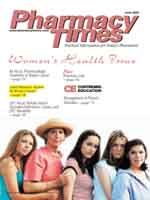Publication
Article
Pharmacy Times
A Fresh Look at Digoxin Monitoring
Author(s):
Since joining the American Society of Consultant Pharmacists in 1977, I have developed a number of Policy and Procedures manuals for a large number of skilled nursing facilities (SNFs), assisted living facilities (ALFs), and personal care facilities. Each time, I have included a section dealing with digoxin monitoring, which would carry the statement "Take Apical Pulse (A/P) daily before administering. Hold if A/P is below 60 beats/minute and notify attending physician."
About 9 months ago, an epiphany occurred as I was checking medication administration records at one of the facilities where I serve as a consultant pharmacist. I noticed that residents with a diagnosis of hypertension being treated with antihypertension medications had their blood pressure (B/P) monitored once a week, and other residents had vitals signs (temperature, B/P, respiration, and weight) checked once a month.
I also noticed that A/P for residents taking digoxin was performed daily, as required by the Policy and Procedures manual. As I thought back, however, I could recall digoxin being "held" only once or twice during my career as a consultant pharmacist. Why were medication nurses in every SNF and ALF across the United States checking A/P daily?
My next step was to question medication nurses, assistant directors of nursing, and directors of nursing (DONs) about their experiences regarding digoxin monitoring. Most nurses I questioned had been in practice for at least 10 years, and none could remember "holding" digoxin more than once or twice, compared with the hundreds of doses they had administered during their career. They also indicated that digoxin was "held" when the A/P was 58 or 59 beats/minute, and that it was back to normal (over 60) the next day. Therefore, the probability was that the nurse miscounted or only checked the pulse for 30 seconds and multiplied by 2 to get the beats/minute.
As I continued my research, I found that physicians, nurses, and pharmacists had their initial experience with digoxin in the hospital setting, while a particular patient was being digitalized.
During that time in the hospital, the A/P rate was critical in helping to determine the correct digoxin dose. Once the patient was properly dosed with the medication and discharged from the hospital to his or her home (or a recuperative facility), such close monitoring was not required. Indeed, patients discharged to their home generally are not instructed to monitor their A/P every day.
As a result of this research, I developed the following parameters for digoxin monitoring, which were approved by the DON and the medical director.
NOTE: When an order for any digitalis glycoside (digoxin) is prescribed for a resident, his or her pulse rate is to be checked once a week and recorded on the Medication Administration Record. If the resident's apical pulse is less than 60, the medication is to be given as ordered and the apical pulse is to be monitored daily for three (3) days (continuing to administer the medication). If the apical pulse rate continues at less than 60 after three (3) days, the medication is to be held and the attending physician notified of the three (3)-day apical pulse rate.
I have monitored the residents in a 300-bed continuing care community during the last 9 months, and I can report that not a single dose of digoxin has been "held." The resulting time saved by the medication nurse may not seem significant, but in the course of a month or a year a great deal of time may be saved by this change. More important is the psychological impact on the medication nurse. A/P monitoring is one less procedure to be performed, with the time being spent on other care for the patient.
Pharmacists and nurses should reevaluate routine tasks, such as digoxin monitoring, to determine whether or not those tasks add a positive outcome to patient care. In this instance, with digoxin monitoring, I believe not only that patient care can be improved without sacrificing quality patient care, but that nursing time for patient care may also be enhanced.
Mr. Vogenberg is a semiretired pharmacist based in Langhorne, Pa.







